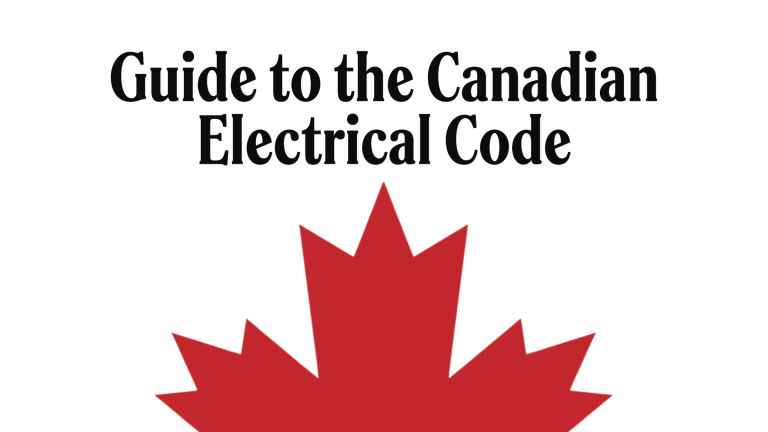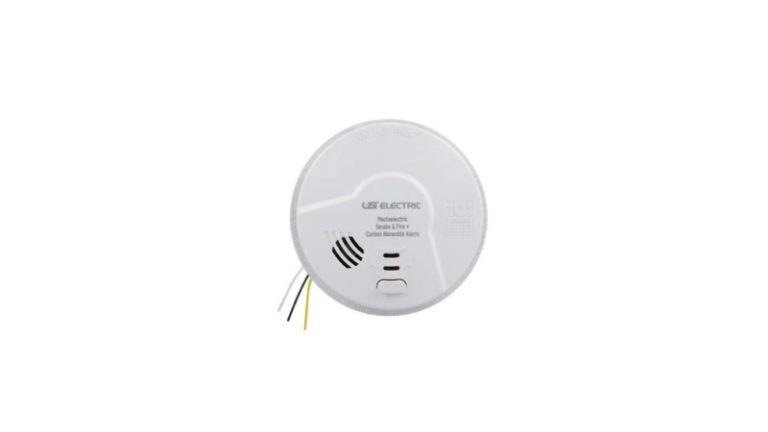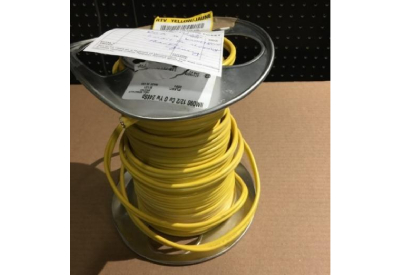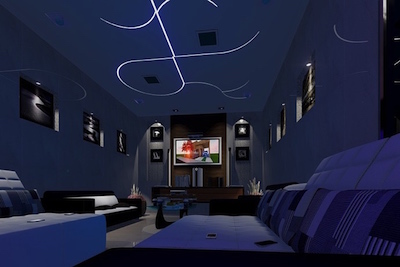Guide to the Canadian Electrical Code, Part I — Instalment 43

November 8, 2018
By William (Bill) Burr
In this article: Tables Section — Part A. This section of the code contains 99 tables of essential information that is referenced by various rules of the Ccde. Tables referenced by rules are considered normative (mandatory) elements of the code. Note that the D tables of tabulated information in Appendix D are considered non-normative (non-mandatory) elements. The tables are in numerical order based on when that table was included in the code. Since this is a large section it will be discussed in two parts. This part covers Tables 1 to 35.
Tables 1 to 4 provide allowable ampacities for unshielded conductors rated not more than 5000 volts based on maximum allowable conductor temperature from Table 19 and an ambient temperature of 30 degrees centigrade for
• copper conductors (Tables 1 and 2) or aluminum conductors (Tables 3 and 4)
• single conductors installed in free air (Tables 1 and 3), or
• not more than 3 insulated conductors installed in raceway or cable (Tables 2 and 4)
Tables 5A, 5B, 5C, and 5D provide correction factors for
• ambient temperatures above 30 degrees C (Table 5A)
• Table 1 and 3 ampacities for 2 to 4 single conductors (Table 5B)
• Tables 2 and 4 for more than 3 insulated conductors (Table 5C)
• for vertical layers of insulated conductors in ventilated ladder-type trays
Rules 4-004, 4-006, 8-104, 12-3034, 16,330, 26-142, 42-008, and 42-016 reference these tables.
Table 6 is deleted.
Tables 6A, 6B, 6C, 6D, 6E, 6F, 6G, 6H, 6I, 6J, and 6K, provide the maximum number of insulated conductors or cables of one size in trade sizes of conduit or tubing depending on voltage, thermoset insulation with or without a jacket, underground type cables, and thermoplastic insulation of the conductors or cables:
• Table 6A — 600v thermoset insulated conductors without a jacket — Types R90, RW75, RW90, and RPV90
• Table 6B — 1000v thermoset insulated conductors without a jacket — Types R90, RW75, RW90 and RPV90
• Table 6C — 600v thermoset insulated conductors with a jacket — Types RW75, RW90, R90 and RPV90
• Table 6D — underground cables — Types RWU90 (1000v), TWU (600v), and TWU75 (600v)
• Table 6E — 1000v and 2000v thermoset cables without a jacket — Type RPVU90
• Table 6F — 1000v and 2000v thermoset cables with a jacket — Type RPVU90
• Table 6G — 2000v thermoset insulated conductors without a jacket — Type RPV90
• Table 6H — 1000v thermoset insulated conductors with a jacket — Type RPV90
• Table 6I — 2000v thermoset insulated conductors with a jacket — Type RPV90
• Table 6J — 600v thermoplastic insulated conductors — Types TW and TW75
• Table 6K — 600v thermoplastic insulated conductors — Types TWN75 and T90 NYLON
These tables are referenced by Rule 12-910.
Table 7, which is referenced by Rule 12-924, provides the minimum radius of bends in conduit or tubing.
Table 8 provides the maximum allowable percent of conduit and tubing fill for the number and type of conductors, or multi-conductor cables, as referenced by Rules 12-902, 12-910 and 30-032.
Table 9 is deleted.
Tables 9A to 9P provide look-up tables for the internal diameter and cross-sectional area of various types of conduit and tubing and conduit fill, as required by Rule 12-910:
• Table 9A — rigid metal conduit
• Table 9B — flexible metal conduit
• Table 9C — rigid PVC conduit
• Table 9D — rigid Type EB1 PVC conduit and rigid Type DB2/ES2 PVC conduit
• Table 9E — rigid RTRC conduit marked IPS
• Table 9F — rigid RTRC conduit marked ID
• Table 9G — liquid-tight flexible metal conduit
• Table 9H — non-metallic liquid-tight flexible conduit
• Table 9I — electrical metallic tubing
• Table 9J — electrical non-metallic tubing
• Table 9K — HDPE conduit Schedule 40
• Table 9L — HDPE conduit Schedule 80
• Table 9M — HDPE DR9 conduit
• Table 9N — HDPE DR11 conduit
• Table 9O — HDPE DR 13.5conduit
• Table 9P — HDPE DR15 conduit
Tables 10A to 10D, referenced by Rule 12-910 and Appendix B, provide dimensions, both diameter and area, of various sizes and types of conductors and cables for calculating conduit and tubing fill:
• Table 10A — Stranded Insulated Conductors by type, voltage, and class
• Table 10B — Photovoltaic Insulated Conductors and Cable by type, voltage, and class
• Table 10C — Solid Insulated Conductors, by type
• Table 10D — DLO Cable, by type
Table 11, referenced by Rules 12-010, 2-402, 12-406 and 12 -122, provides conditions of use, voltage, and temperature ratings of various types of conductors and cables by location, use, kind, type, voltage, and temperature, and includes reference notes.
Table 12, referenced by Rules 4-012 and 4-014, provides allowable ampacity of flexible insulated copper conductors, cords, and equipment wire, based on an ambient temperature of 30°C, by type and number of conductors in the cord or cable.
Table12A, referenced by Rule 4-034 and Tables 12B to 12D, provides allowable ampacities for portable insulated copper conductor power cables by number of conductors, voltage rating, and whether shielded or non-shielded.
Tables 12B, 12C and 12D provide correction factors for Table 12A based on temperature, insulation and layering.
Table 12E, referenced by Rules 4-006 and 12-406 and Tables 5D, 12B and 12C, provides a lookup of allowable ampacities for Type DLO cables, in a permanent installation, in cable-tray.
Table 13, referenced by Rules 14-104 and 28-204, provides the rating or setting of overcurrent devices protecting conductors for general use, where not otherwise specifically provided for, and based on the ampacity of conductor A.
Table 14, referenced by Rules 8-002 and 8-210, provides watts per square metre and demand factors for services and feeders, based on various types of occupancy.
Table 15, referenced by Rules 34-400 and 36-102, provides the allowable bending radii for high-voltage cable, based on type and diameter of the cable.
Table16, referenced by Rule 10-614, provides the minimum size of field-installed system bonding jumpers and bonding conductors based on
• ampere rating or setting of the overcurrent device of the conductor or equipment
• ampere rating of the largest ungrounded conductor
• whether copper or aluminum conductors
Tables 16A, 16B and 17 are deleted.
Table 18, referenced by Rules 18–090, 18-100, 18-150, 18-190, 18-200 and 18-250, specifies the marking requirements on equipment suitable for explosive atmospheres for both Zone and Division systems.
Table 19, referenced by Rules 12-100, 12-102, 12-302, 12-406, 12-602, 12-606, 12-902, 12-904, 12-1606, 12-2104, 12-2202, 16-330, 22-202, and Tables 1, 2, 3, 4, D1, and D3, provides conditions of use and maximum allowable insulation temperature of conductors and cables other than flexible cords, portable power cables, and equipment wires.
Table 20, referenced by Rules 12-204 and 12-214, provides minimum spacings for open wiring between insulated conductors and from adjacent surfaces, based on the voltage of the circuit.
Table 21, referenced by Rule 12-120, provides maximum distances for supporting insulated conductors in vertical runs of raceways.
Table 22, referenced by Rule 12-3034, provides requirements for minimum usable space for insulated conductors in boxes, depending on the size of each conductor.
Table 23, referenced by Rule 12-3034, specifies the number of insulated conductors allowed in boxes, based on the type and dimensions of the box.
Table 24, referenced by Rule 70-130, outlines the minimum insulation resistances for installations based on size, type and amperage of the conductor.
Table 25, referenced by Rules 14-306 and 28-304, provides the number and location of overcurrent trip coils for circuit breakers and overload devices for protecting motors, based on the type of system or motor.
Table 26 is now Table D16.
Table 27, referenced by Rules 28-106, 28-112, and 38-013, outlines determining conductor sizes for motors for different classes of service, based on a percentage of the nameplate current rating.
Table 28, referenced by Rule 28-112, determines conductor sizes in the secondary circuits of motors, based on the percentage of full load carrying capacity of insulated conductors in the secondary circuit, and class of service.
Table 29, referenced by Rules 28-200, 28-206, 28-208, and 28-308 and Table D16, provides the percentage of full load current rating, or setting, of overcurrent devices for the protection of motor branch circuits, based on the type of motor.
Table 30, referenced by Rule 36-108, provides the minimum clearances for bus support and rigid conductors, per maximum system voltage.
Table 31, referenced by Rule 36-108, specifies minimum horizontal separations of line conductors attached to the same supporting structure, per maximum system voltage.
Table 32, referenced by Rule 36-110 and Appendix B, demarcates the required vertical isolation of unguarded live parts, based on maximum system voltage and whether the area is subject to vehicle travel, accessible to pedestrians only, and heavy or light snow load.
Table 33, referenced by Rules 26-302 and 36-110 and Appendix B, delineates the required horizontal clearances from adjacent structures (including protuberances), based on maximum system voltage.
Table 34, referenced by Rule 36-110 and Appendix B, outlines required vertical ground clearances for open line conductors, based on maximum system voltage.
Table 35, referenced by Rule 36-212, provides the required spacing for non-metal-enclosed type switches and fuses, assembled in the field, based on maximum voltage, and the type of switches and fuses.
In the next instalment, we will be discussing the Tables Section Part B — Tables 36A to 69.
* The source for this series of articles is the Canadian Electrical Code, Part I, (C22.1-18) published by CSA.
** Note the CEC Handbook is also published by CSA.
William (Bill) Burr is the former Chair of the Canadian Advisory Council on Electrical Safety (CACES), former Director of Electrical and Elevator Safety for the Province of BC, and former Director of Electrical and Gas Standards Development and former Director of Conformity Assessment at CSA Group. Bill can be reached at Burr and Associates Consulting billburr@gmail.com.

















